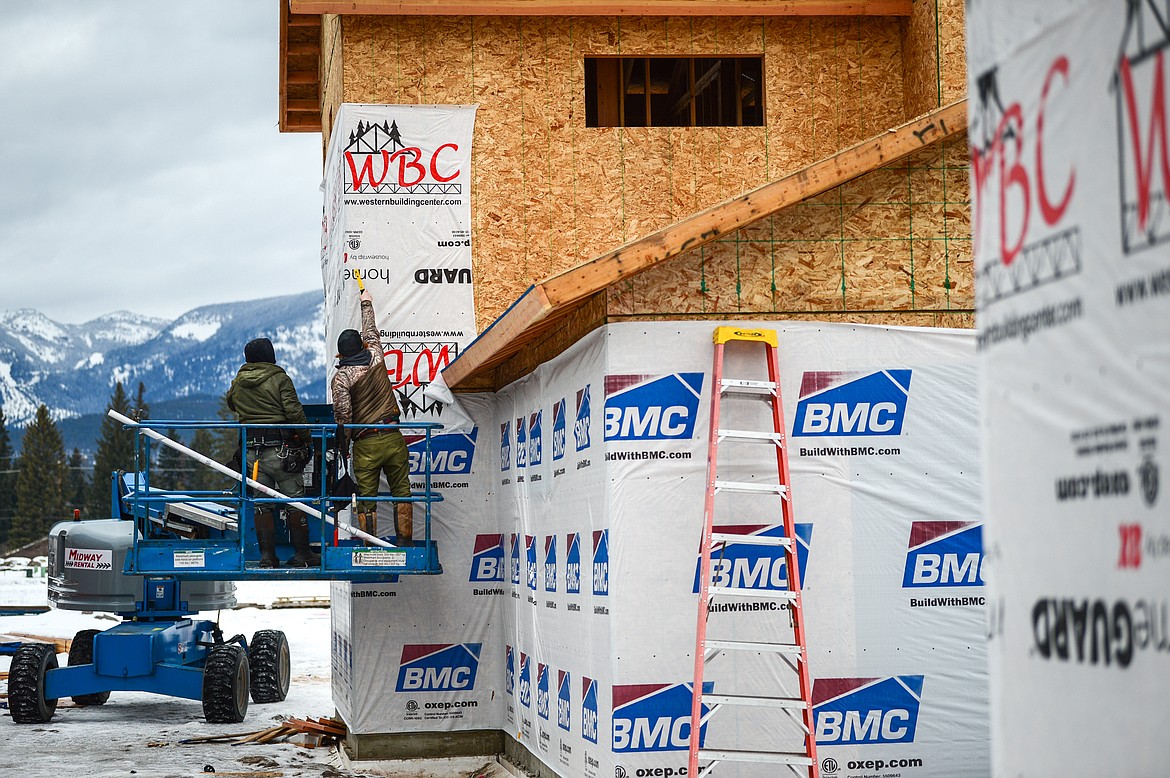Whitefish looks to roadmap to address housing needs
Whitefish City Council is poised Monday to adopt a roadmap designed to address community housing in the Whitefish area over the next five years.
The Whitefish Community Housing Roadmap is the next evolution of the Whitefish Strategic Housing Plan adopted by the city in 2017. The new roadmap updates and adds strategies, proposes a framework for adding community partners to address housing needs and identifies core components needed to support housing.
The city notes that many successes resulted from the original plan, but shifts in the housing market and stronger community involvement means that stronger steps should be taken to be even more effective.
City Council meets at 7:10 p.m. at City Hall, 418 E Second St.
Community housing is defined as housing not being provided by the existing housing market at prices attainable for community members who live and work in the Whitefish area, according to the city.
The road map says it was “established with the recognition that having diverse and secure housing opportunities, at prices residents making their living in the area can afford, is essential for maintaining the livability, diversity, and character of the Whitefish community and to ensure a strong and vibrant economy and quality services.”
As part of efforts on the roadmap, work was done to refresh the city’s Housing Needs Assessment providing an updated picture of housing in Whitefish. That assessment shows that Whitefish must add more than 1,300 homes by 2030 to address current needs. The original 2016 assessment showed a need to add about 980 residences by 2020.
The community roadmap includes metrics to ensure housing goals are being met to measure success, core components aiming to make implementation succeed and a list of priority strategies and actions.
The roadmap points to three key points to summarize the community housing needs.
First, the rental market is both expensive and scarce. A three-person household earning up to $75,000 per year in Whitefish struggles to find rental housing defined as affordable in the city’s environs.
Second, buying a home is out of reach for most local employees because households making their living locally are often priced out of the home ownership market simply because it’s become too expensive. Homes priced under $500,000 have grown scarce not only in the Whitefish area, but in neighboring communities.
Finally, to address the current housing shortfall and keep up with future job growth, at least 75% of the 1,310 housing units needed by 2030 must be priced below market rate to support local residents and employees. Addressing housing needs will require local policies, subsidies and creative partnerships.
THE ROADMAP is considered a tool to facilitate collective action of shared goals among housing partners and inform the development of housing work plans.
Components of the roadmap include four objectives to ensure that housing strategies are properly focused to provide the diversity of housing needed.
The first is to maintain the 65% ownership and 35% rental relationship to preserve the community. Second is to serve a wide range of income levels. Third is to, if possible, increase the percentage of homes occupied by residents of the community to 70%.
Fourth is to keep up with job growth and provide more opportunities for employees to reside in Whitefish.
The roadmap recommends four core actions to improve the effectiveness of housing efforts by establishing a partnership framework, increasing staff capacity, making adjustments to the city’s current housing programs, and developing community outreach and education programs related to housing.
The action part of the roadmap is the community housing strategies that represent the prioritized actions for partners to undertake over the next several years to meet housing objectives. The strategies from the 2017 plan were revised and new ones were added.
The strategies are broken down into four main areas — activate public and private development, secure funding for community housing, implement policies to support community housing and expand housing programs.
AT ITS meeting, Council is also expected to vote on a resolution adopting the city’s legislative priorities for the 2023 Montana Legislature. The topic areas include areas the city plans to support and opposes under the categories of affordable housing, environmental quality, municipal finances, land use regulation and renewable and clean energy opportunities.
Council is expected to vote on an ordinance amending city code to establish the business transitional zoning district as an implementation of the Highway 93 South Corridor Plan.
Features Editor Heidi Desch may be reached at 758-4421 or hdesch@dailyinterlake.com.


